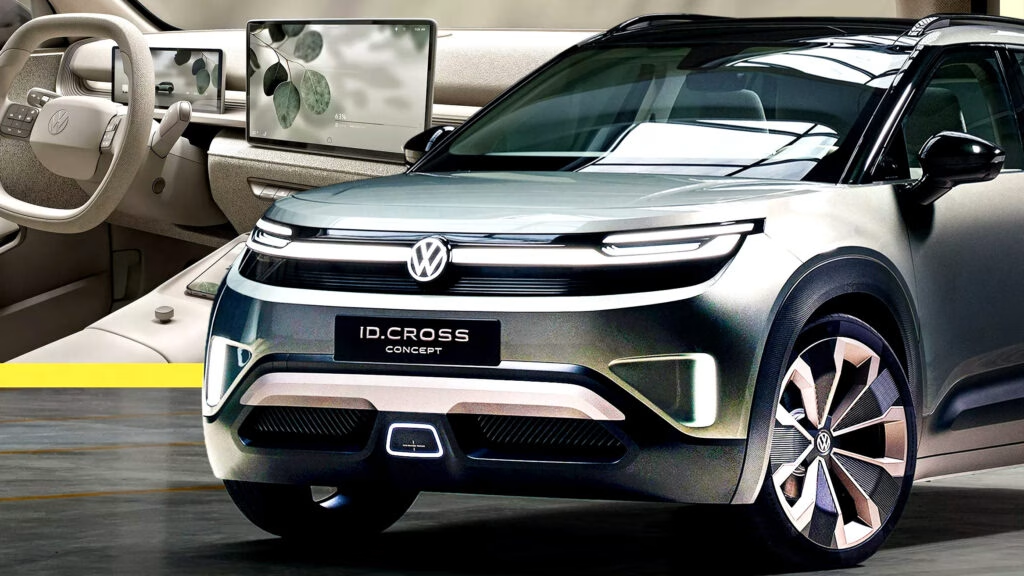What Makes the VW ID. Cross Stand Out Among New Electric SUVs?
Volkswagen’s ID. Cross concept turned plenty of heads at the 2025 Munich auto show, and for good reason. This subcompact electric SUV isn’t just another addition to VW’s growing ID family—it’s a bold statement about where affordable EVs are headed. Sharing its underpinnings with the upcoming ID. Polo hatchback, the ID. Cross is positioned as a practical, stylish, and surprisingly clever alternative to both legacy combustion crossovers and the latest electric rivals.
The Cross name signals its role as the electric sibling to the T-Cross, but the similarities end there. Built on a new front-wheel-drive version of VW’s MEB platform, the ID. Cross is part of a new generation of small EVs designed to bring electric mobility to the masses. With a projected starting price around £25,000/€28,000, it’s aiming squarely at the sweet spot for urban drivers who want a mix of efficiency, utility, and modern flair.
How Does the Design Balance Practicality and Style?
Let’s talk numbers and looks. The ID. Cross stretches 4,161 mm in length and stands 58 mm taller than its hatchback sibling, the ID. Polo. That extra height isn’t just for show—it translates to a roomier cabin and a commanding driving position, two things urban SUV buyers crave. The 2,601 mm wheelbase is nearly identical to the Polo, but the Cross’s 490-liter rear cargo area (plus a 25-liter frunk) gives it a clear edge for weekend getaways or IKEA runs.
Design-wise, VW has taken a few risks. The front fascia is shaped by playful LED lighting, creating what the company calls a “friendly” face. Three illuminated rectangles in the C-pillar nod to the retro ID. Buzz and the classic VW Bus, blending nostalgia with modernity. Black plastic cladding and 21-inch wheels (with Continental tires that mimic the rim’s pattern) add a rugged, almost whimsical touch. Sure, those tires might make your local tire shop groan, but the visual impact is undeniable.
Is the Interior a Step Forward for Everyday Comfort?
Step inside, and you’ll notice VW has learned from past missteps. The ID. Cross’s cabin borrows cues from the ID2.all concept, but it’s the details that set it apart. An 11-inch digital instrument cluster sits behind a chunky, square steering wheel, while a 13-inch infotainment touchscreen dominates the center dash. Unlike some earlier VW EVs, there’s a welcome return to physical buttons for climate control—no more hunting through menus just to turn up the heat.
One clever touch: place your smartphone face-down on the wireless charging pad, and the car’s displays shift to a “calm status,” showing only essential info. It’s a small thing, but it speaks volumes about VW’s focus on reducing digital overload.
The interior’s Vanilla Chai color scheme, fabric surfaces, and ambient lighting are inspired by Parisian fashion and high-end furniture. It’s not just about looking good—these choices are meant to create a calming, inviting space. And for those who love a bit of adventure, both front and rear seats fold flat, turning the back into a makeshift sleeping area. Think of it as a subtle homage to the classic VW Bus, just with less room to stretch out.
What Can Drivers Expect from the Powertrain and Range?
VW is keeping some details under wraps, but here’s what we know: the ID. Cross will offer a WLTP range of up to 261 miles (420 km) on a single charge. Power comes from a single front-mounted electric motor delivering 208 hp (155 kW), which is just a hair less than the sportier ID. Polo GTI’s 223 hp. For most drivers, that’s more than enough grunt for city commutes, highway cruising, and the occasional spirited drive.
Battery options haven’t been fully disclosed, but if the ID. Polo’s two-battery approach is any indication, buyers can expect a choice between affordability and maximum range. With Europe’s charging infrastructure improving rapidly—over 600,000 public charging points are expected across the EU by 2025, according to the European Alternative Fuels Observatory—range anxiety is becoming less of a barrier for urban EV buyers.
How Does the ID. Cross Stack Up Against the Competition?
The subcompact electric SUV segment is heating up fast. The ID. Cross will go head-to-head with models like the Kia EV2, Toyota Urban Cruiser, Ford Puma Gen-E, and Volvo EX30. Where VW aims to differentiate is in its blend of practicality, design, and price. The ID. Cross’s fold-flat seats, generous cargo space, and thoughtful tech touches give it an edge for buyers who want more than just a basic commuter.
It’s also worth noting that VW is positioning the ID. Cross as a global model, though US availability hasn’t been confirmed yet. If it does make the jump across the Atlantic, it could fill a much-needed gap in the affordable EV crossover market, especially as American buyers increasingly look for alternatives to larger, pricier electric SUVs.
Why Should Urban Drivers Pay Attention to the ID. Cross?
For city dwellers, the ID. Cross checks a lot of boxes. Compact footprint for easy parking? Check. Elevated driving position for better visibility? Absolutely. Enough range to handle a week’s worth of errands or a spontaneous road trip? No problem. And with a price tag that undercuts many rivals, it’s poised to make electric driving accessible to a wider audience.
VW’s decision to bring back physical controls and focus on a calming, user-friendly cabin shows they’re listening to real-world feedback. That’s a refreshing change in an industry sometimes obsessed with touchscreens and tech for tech’s sake.
The big takeaway? The ID. Cross isn’t about perfection—it’s about smarter adjustments. Start with one change this week, and you’ll likely spot the difference by month’s end. If VW keeps this up, the ID. Cross could be the EV that finally makes electric SUVs feel like home for everyday drivers.

